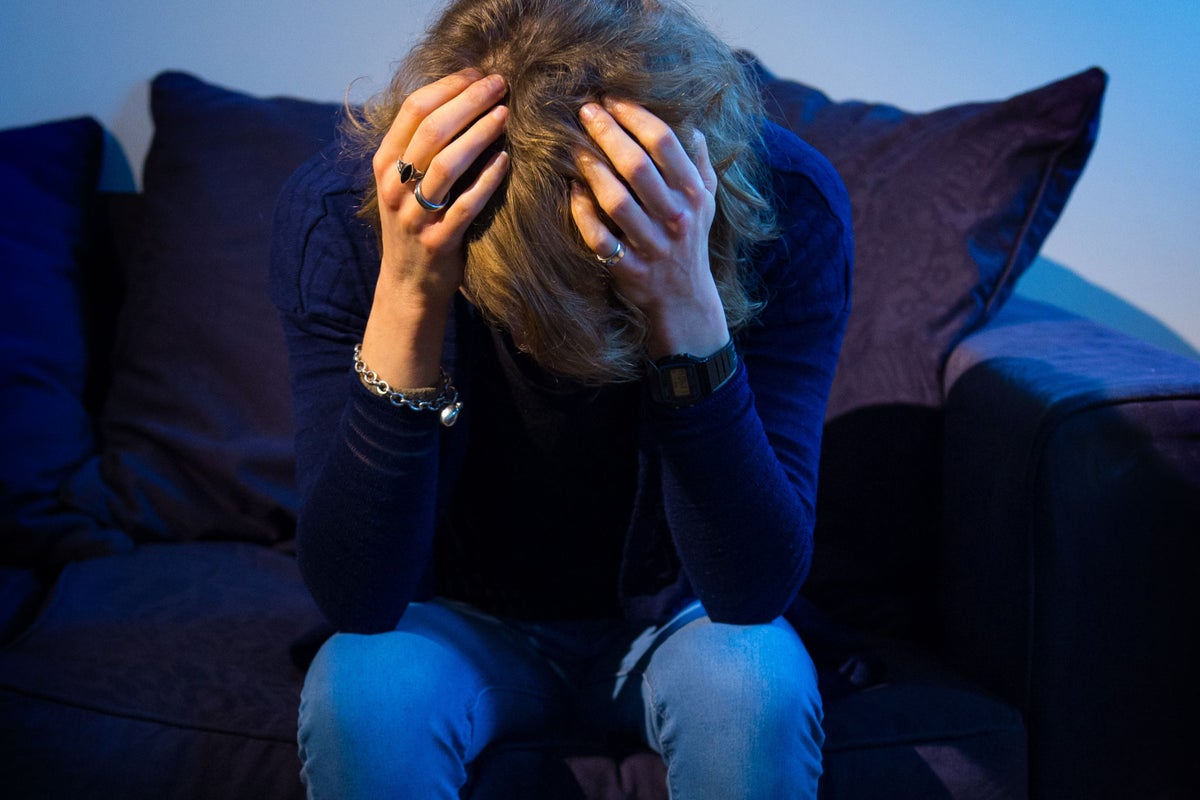
There has been a sharp rise in the number of older teenagers who most likely have a mental health disorder, according to new data.
One in four 17 to 19-year-olds are now suffering serious mental distress, up from one in six last year, with experts blaming the impact of the Covid pandemic as well as issues such as the rising cost of living.
A new report covering England, from NHS Digital, also shows that around one in five children under 16 also reach the threshold for probably having a mental health disorder.
Issues facing children and teenagers include depression, anxiety, eating disorders, sleeping problems, self-harming and profound loneliness.
Large numbers of youngsters reported being worried about the impact of Covid on their schooling, while others were struggling with social media and online bullying.
The Mental Health of Children and Young People in England 2022 report found that the proportion of 17 to 19-year-olds with a probable mental health disorder increased from 17% in 2021 to 26% in 2022.
This figure was just one in 10 in 2017, rising to 18% in 2020 during the Covid pandemic, then remaining stable at 17% between 2020 and 2021.
Among seven to 16-year-olds, the percentage with a probable disorder was 18% in 2022, up from 12% in 2017, but similar to the figures for 2020 and 2021.
For those aged seven to 10 in 2022, probable mental health disorders were nearly twice as high in boys (20%) as in girls (11%).
Rates were similar in boys (19%) and girls (22%) in the 11 to 16 age group, but much higher in young women aged 17 to 24 (31%) than in young men (13%).
When you think about the 17 to 19-year-olds or the older teenagers, this age range is one where it's often quite a time of stressful change for young people— Dr Tamsin Newlove-Delgado
Dr Tamsin Newlove-Delgado, senior clinical lecturer and honorary consultant in child public mental health at the University of Exeter, said the impact of Covid-19 had been “a shock to the system in terms of impacts on people’s education, family, home lives and socialising.”
She added: “And in particular, when you think about the 17 to 19-year-olds or the older teenagers, this age range is one where it’s often quite a time of stressful change for young people, they’re moving from childhood to adulthood, they’re moving through different life stages and that can already be stressful.
“For this cohort of young people, they will have been going through those changes during Covid with all the various uncertainties that might accompany that. You can imagine that would have a particular impact on them.”
She said the “wider global uncertainties and cost-of-living crisis” will also have “impacts on their mental health”.
The report included a sample of 2,866 children and young people who are now aged between seven and 24, while parents of those aged seven to 16 also provided information.
The study found that children living in households where money was a concern were more likely to suffer poor mental health.
We’re also seeing the toll of the cost-of-living crisis on young adults with mental health problems, who were seven times more likely than their peers without mental health problems to have used food banks or experienced food insecurity in the last year— Sophie Cortlett, Mind
Among 17 to 22-year-olds with a probable disorder, 15% reported living in a household that had experienced not being able to buy enough food or using a food bank in the past year, compared with 2% of those unlikely to have a disorder.
One in five (20%) of all seven to 16-year-olds lived in households that had experienced a reduction in household income in the past year, but this was 29% for those most likely to have a mental health disorder.
Overall, 18% of children aged seven to 16 with a probable disorder lived in a household that had fallen behind with bills, rent or mortgage, compared with just 8% of those unlikely to have a mental disorder.
Meanwhile, 14% of children with a probable mental disorder lived in a household where they could not afford to keep the house warm enough, compared with 6% of those unlikely to have a disorder.
Other issues highlighted in the report related to bullying online, with one in eight of all 11 to 16-year-old users of social media saying they had been bullied online.
This rose to 29% for those with a probable mental disorder.
Of those aged 17 to 24, young women were almost twice as likely to report having been bullied online (20%) compared with 11% of young men.
There were also issues with eating problems, with 13% of 11 to 16-year-olds, 60% of 17 to 19-year-olds and 62% of 20 to 23-year-olds having a possible eating problem in 2022.
For children aged 11 to 16, the rate was 18% in girls compared with 8% in boys, and for those aged 17 to 19, the rate was 76% in young women, compared with 46% in young men.
Loneliness was also a problem, with 5% of 11 to 16-year-olds and 13% of 17 to 22-year-olds saying they often or always felt lonely. Among those with a probable disorder, rates were far higher.
Mental health disorders are also linked to self-harming, with 28% of seven to 16-year-olds and 69% of 17 to 24-year-olds with a probable disorder having ever tried to harm themselves.
Sophie Corlett, interim chief executive for Mind, said the proportion of young people suffering poor mental health has stayed “consistently high” since the Covid pandemic, “suggesting that an entire cohort have remained in heightened states of distress for years following the educational, social and economic upheaval of Covid-19”.
She added: “We’re also seeing the toll of the cost-of-living crisis on young adults with mental health problems, who were seven times more likely than their peers without mental health problems to have used food banks or experienced food insecurity in the last year.”
She said the current system of support “cannot keep up with demand” and the “UK government will be failing an entire generation” unless it invests and “specifically funds mental health hubs for young people.”







